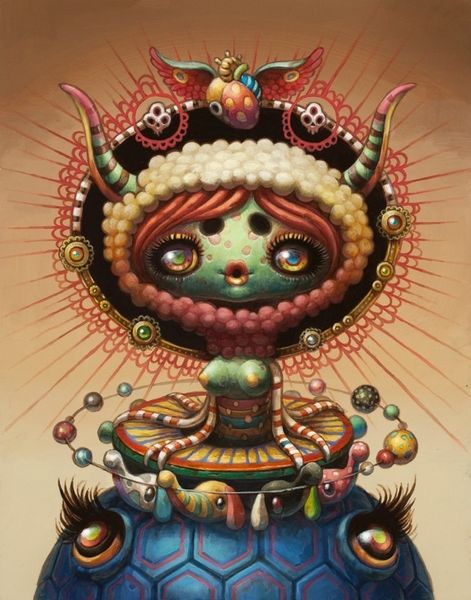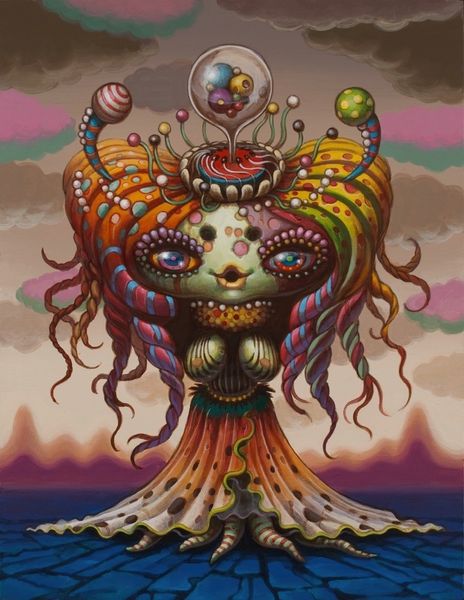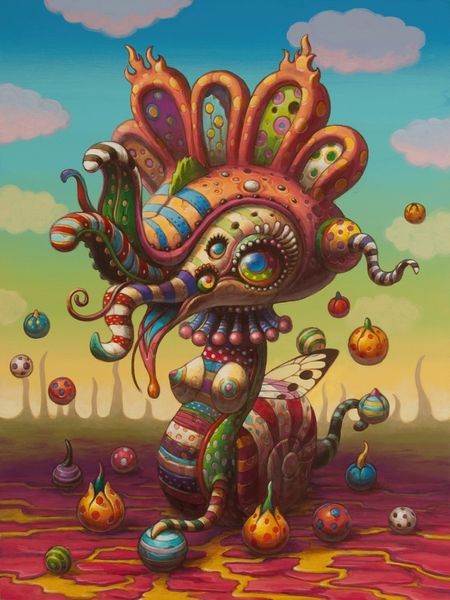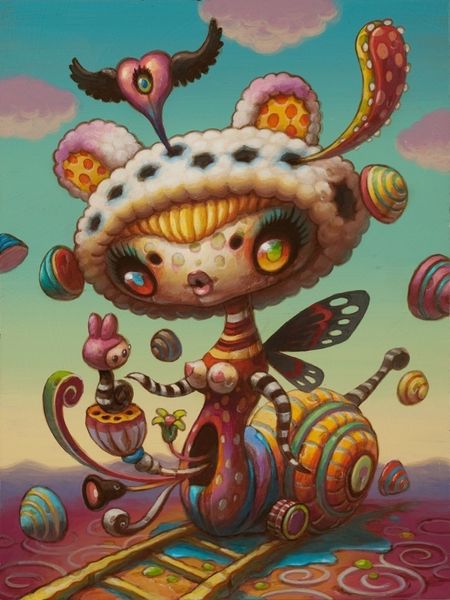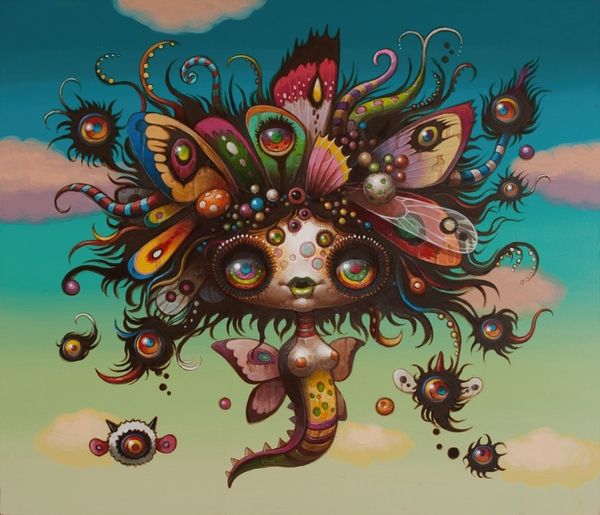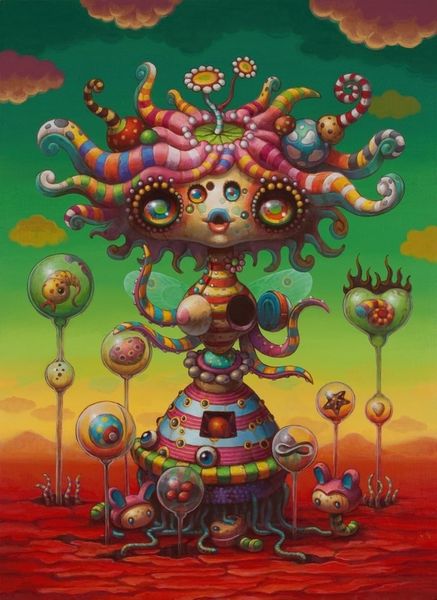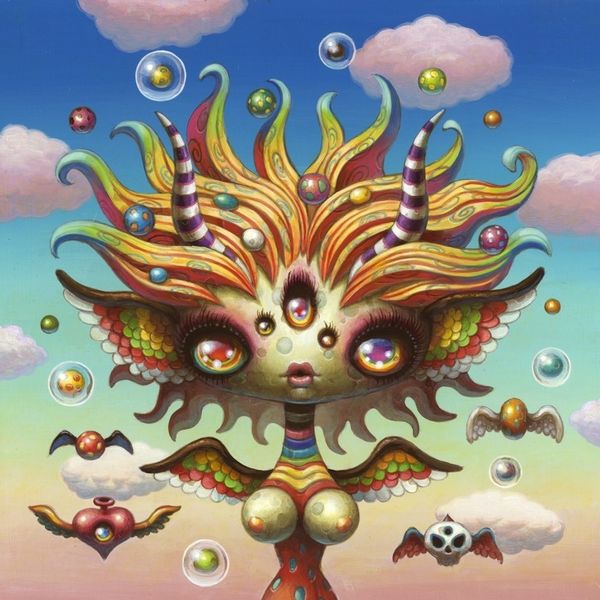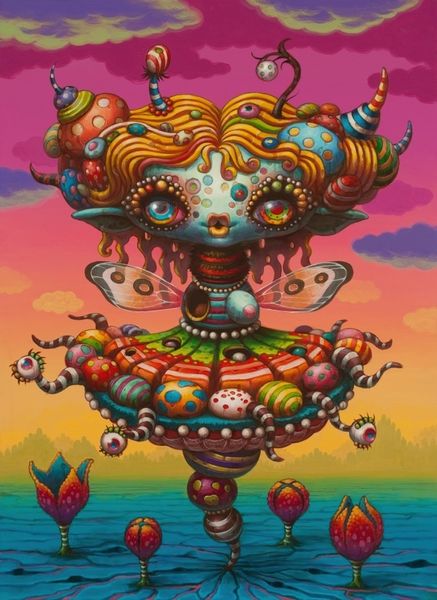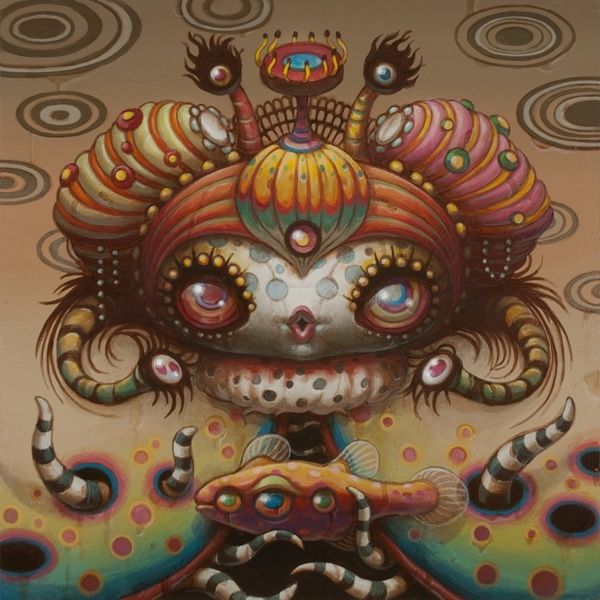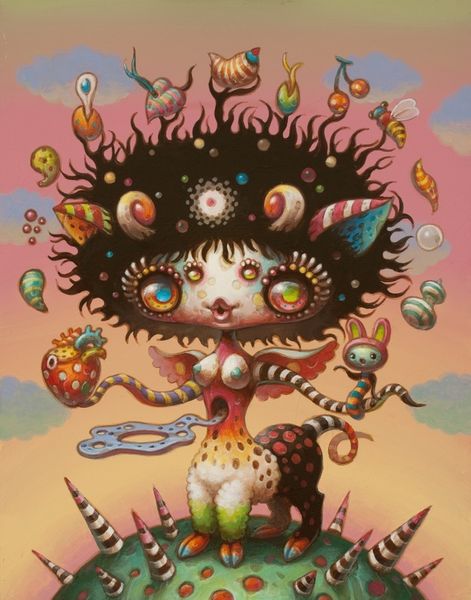
acrylic-paint
#
organic
#
pop-surrealism
#
landscape
#
acrylic-paint
#
figuration
#
surrealism
Copyright: Modern Artists: Artvee
Editor: So this is "The Queen of Death" by Yoko d'Holbachie, an acrylic painting. It’s… quite a creation. I’m struck by its blend of the cute and the macabre, like something out of a strange fairy tale. What do you make of it? Curator: From a materialist perspective, I see a fascinating intersection of production methods at play here. Holbachie uses acrylics, a relatively modern medium, to create a hyper-detailed, almost obsessive surface. How does this medium inform the fantastical, dreamlike quality of the piece, especially given acrylic's connection to mass production and commercial art? Editor: That’s a good point. I hadn’t thought about how the acrylics might contrast with the subject matter. The skull imagery and 'Queen of Death' title suggest older, darker themes, while the medium feels very contemporary. Curator: Precisely. Consider the labor involved: the meticulous layering and blending required to achieve such detail. It almost blurs the line between high art and craft. This brings up the question: where does this piece sit in the broader art market, and who is the intended consumer of this specific brand of surrealism? What’s your sense? Editor: I guess the artist is making a comment on what kind of imagery we are used to consuming now. She is repurposing it. It does remind me a little of the lowbrow art movement. I suppose what I mean to ask is, are these death images something else? Is it death itself or some modern representation? Curator: Perhaps the modern production enables a modern take on death. We can view the "death" symbols as commodities produced with a fast fashion type attitude. Editor: Yes, that’s given me a lot to consider about the themes behind the images, the way it’s made, and how the materials inform those ideas. Curator: Indeed, and understanding how material production shapes meaning allows for a richer understanding.
Comments
No comments
Be the first to comment and join the conversation on the ultimate creative platform.

